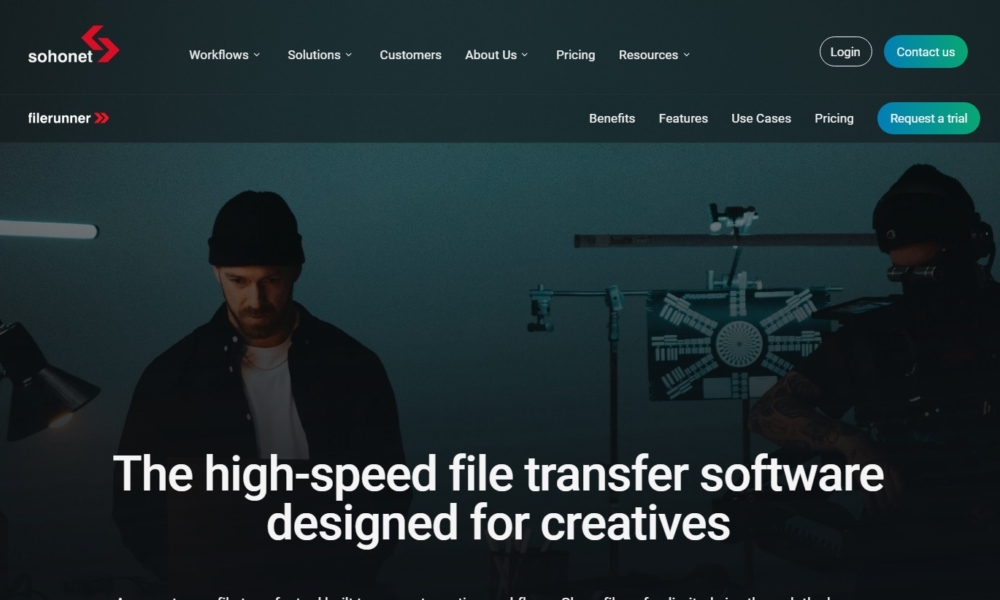If, like countless others in the media and entertainment industry, the majority time of your days revolve around getting massive media files securely to the right people at the right time, then you know it’s the lifeblood of keeping your business operations running at full speed.
The secret sauce for achieving this data transfer dance flawlessly? Automated file transfer.
Those repetitive, error-prone manual processes – you know, the ones where you move data between systems endlessly – are prime candidates for time-saving automation.
Today, we’ll examine the power and potential of automating all sorts of file transfers within your daily business operations. By streamlining your media workflows, we can help you unlock time and cost savings.
Why Manual File Transfer is Insecure and Insufficient?
Though familiar to us all, the main challenge of manually transferring large files or large quantities of data is that the process quickly becomes inefficient, unpredictable, and error-prone.
This is especially true when manually delivering multiple files to different recipients since it may turn repetitious (and boring). This frequently results in minor errors such as putting the wrong recipient email or storage platform, failing to password-protect a transfer, or transferring the incorrect file.
Manual file transfers also require manual oversight. Someone must be available to monitor the transfer, which means less time for more important tasks.
Human errors like accidental data loss, missed transfers, or incorrect naming can lead to costly delays. Given that media file transfer pipelines often include multiple touchpoints, doing it manually can increase the risk of security breaches along the way.
In such scenarios fraught with risks and errors, automated file transfer software has emerged as a superhero. It handles the simpler yet critical tasks of file transfer, which ultimately saves you time and money otherwise spent on additional personnel.
Benefits Of Automated File Transfer Tools
Automated file transfer tools can help you cut costs and secure your processes, but what more can they add to your workflow? Let’s explore how these tools can significantly boost your productivity and overall operational efficiency.
It can boost efficiency and reliability.
We all know that manual file transfers are prone to errors and delays. Missed deadlines and data leaks become real possibilities when transferring your files manually. Automated workflows eliminate these roadblocks.
You can configure transfers to initiate automatically as files become available, ensuring a smooth and consistent flow of data. The smooth flow of data results in immediate time savings – your post-production team can begin their day with media already uploaded, not waiting on transfers to complete.
More time for other important tasks.
Imagine spending hours transferring files. Not only is it boring, but you may even feel like wasting your valuable time. Repetitive tasks like uploading, downloading, renaming, and tagging files can stifle creativity and drain valuable time. Automated file transfer software tackles these mundane tasks for you.
Automated transfer tools can be set up to automatically trigger actions like uploading files to designated locations or applying pre-defined file naming conventions. The spare time allows your team to focus on what they do best – crafting compelling content.
You can now scale effortlessly.
The media industry is known for its unpredictable bursts of activity. Manual transfers can become overwhelmed during such peaks, disrupting workflows. Automated solutions, however, are built to handle these fluctuations.
No matter the data volume, the system keeps running smoothly, guaranteeing efficient transfers even during peak times. This translates to a more resilient workflow, which allows your team to focus on creative endeavors even when data demands spike.
Supercharge your productivity.
Automated file transfer offers a domino effect of efficiency gains. Cloud-based solutions require minimal setup, freeing your IT team from tedious configuration tasks.
Reduced manual intervention results in fewer errors and the elimination of repetitive processes, which in turn significantly boosts overall productivity. Your workers can focus on creative brainstorming and content development, while your support staff can dedicate their skills to higher-level tasks.
Peace of mind for your projects.
Downtime in the media industry can be financially devastating. Automated file transfer solutions provide a safety net by incorporating automatic save and recovery systems. This protects your data from human error, disk failures, or system outages – ensuring your critical projects stay on track, even in the face of unforeseen disruptions.
Cut down your cost.
Implementing automated file transfer tools can lead to significant cost savings. Businesses can optimize their operational expenses by reducing manual labor hours associated with file management and data transfer.
The efficiency gains and reduced risk of errors result in lower operational costs and an enhanced return on investment (ROI). This cost-effectiveness makes automated solutions a tempting choice for businesses looking to streamline processes without inflating their budget.
Get a smart workflow.
Automated file transfer tools are more than just a convenience; they’re a strategic investment in your media business’s future.
They help streamline your workflow, which is a critical factor when building an organization. A smart workflow promises high productivity and solid reliability which ensures that you are set right on your road to success.
Wrapping Up!
If you’re another name in the entertainment or media industry, you must understand the struggle of securing file transfers. It’s time to finally bid goodbye to the traditional manual way of transferring files and adapt to automated file transfer tools, which can not only make your job easier but relatively safer. Leveraging the perks of such software, you can boost your team’s productivity, facilitate operations, save time, cut down costs, and so on. Adapt the new way of transferring your files for a smarter workflow.



















